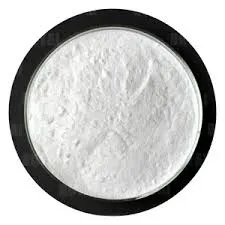
Agosti . 16, 2024 11:58 Back to list
Is HPMC soluble in water and its implications for various applications
Hydroxypropyl Methylcellulose (HPMC) is a non-ionic cellulose ether widely used in various pharmaceutical, food, and cosmetic applications. One common question that arises regarding HPMC is its solubility in water, which is crucial for its effective use in many formulations.
HPMC is synthesized by the modification of cellulose, a natural polymer derived from plant cell walls. This modification introduces hydroxypropyl and methoxy groups to the cellulose backbone, enhancing its solubility in water and its utility in different applications. The solubility of HPMC in water is a key characteristic that sets it apart from other cellulose derivatives.
.
The solubility characteristics of HPMC depend on several factors, including its molecular weight and the degree of substitution. HPMC with a higher degree of substitution tends to have better water solubility, while lower molecular weight variants dissolve more readily than higher molecular weight ones. This allows formulators to select the appropriate grade of HPMC depending on the desired viscosity and the end-use application.
is hpmc soluble in water

In pharmaceutical applications, HPMC serves multiple purposes, one of which is as a binder in tablet formulations. Its water-soluble nature allows for a controlled release of active pharmaceutical ingredients, enhancing the effectiveness of medications. Furthermore, HPMC is utilized in the production of hydrophilic matrices for sustained drug delivery systems. Its ability to swell and form a gel helps to regulate drug release rates, ensuring a steady delivery over time.
In the food industry, HPMC acts as a thickening agent, emulsifier, and stabilizer. It enhances the texture and mouthfeel of various food products, including sauces, dressings, and baked goods. The water solubility of HPMC allows it to integrate seamlessly into aqueous systems, improving product quality and shelf life. Additionally, it is used in gluten-free formulations, where it aids in mimicking the texture usually provided by gluten.
In cosmetics and personal care products, HPMC is valued for its thickening and film-forming properties. Its solubility in water enables it to be easily incorporated into aqueous formulations like lotions, shampoos, and gels, providing desired viscosity and stability. HPMC is often found in hair care products, where it helps in film formation, imparting a smooth texture and sheen to hair.
To sum up, HPMC is indeed soluble in water, and this property makes it an essential ingredient in various industries, including pharmaceuticals, food, and cosmetics. The versatility afforded by its solubility allows for the development of products that require specific textures, viscosities, and delivery systems. Therefore, understanding the solubility characteristics of HPMC can significantly influence formulation strategies and enhance product performance across various applications.
-
Versatile Hpmc Uses in Different Industries
NewsJun.19,2025
-
Redispersible Powder's Role in Enhancing Durability of Construction Products
NewsJun.19,2025
-
Hydroxyethyl Cellulose Applications Driving Green Industrial Processes
NewsJun.19,2025
-
Exploring Different Redispersible Polymer Powder
NewsJun.19,2025
-
Choosing the Right Mortar Bonding Agent
NewsJun.19,2025
-
Applications and Significance of China Hpmc in Modern Industries
NewsJun.19,2025







